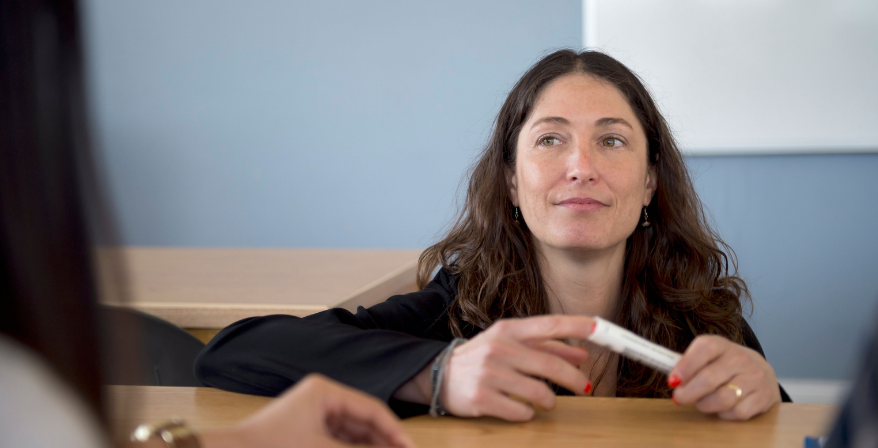Metacognition is about pupils’ ability to monitor and direct their own learning. The concept of metacognition has been around for a long time, but seems to be having a revival recently, perhaps in part owing to some of the challenges presented by lockdown. Beyond the nightmare navigation of zooms, screen sharing and behaviour management from behind a keyboard; a concerning issue was the difficulties students faced when they were forced to regulate their own learning. We noticed a worrying number of pupils would attend online ‘live’ lessons but when left to complete a task they either wouldn’t attempt it or would only put minimal effort into it. Furthermore, an annual issue in our school is the number of students who around every exam period suddenly complain with an air of panic that they ‘don’t know how to revise’.
This demonstrates that our students are not confidently able to monitor and review their approaches to learning in order to build resilience towards independent tasks. We’re seeking the solution to this problem through embedding metacognitive strategies.
Embedding metacognition
There are many ways of embedding metacognition but the simplest and easiest approach is through the structure of lessons. This involves planning activities around key opportunities for the pupils to reflect on their prior knowledge, plan the task ahead of them, monitor their progress and evaluate their success. It’s neatly summarised by: ‘You, Plan, Do, Review’.
In a typical lesson this might look like;
- You: including a starter that asks students to consider prior knowledge on a given topic, and how they coped when learning about this topic in the past.
- Plan: You might give students a task, such as creating a piece of writing on the given topic which students then plan. They plan for not only what physical tasks need doing to reach the end goal, but also what they anticipate finding difficult, where they could go wrong, or get distracted etc.
- Do: The metacognitive teaching process asks teachers to draw students’ attention to not just the completion of the task but the thinking processes that go with it. Once underway the teacher facilitates a midway reflection, suggesting how far you think students might have got in the task and some thinking stems to monitor their progress e.g. I am successful because… I’m confused by… My next steps are… etc.
Review: Lastly, at the end of the task or lesson, the students take time to review and reflect upon what they have learned, both in terms of completing the task about the subject matter in hand, and about their own learning and mindset.
Metacognitive modelling
If you’re thinking this sounds complicated, the most straightforward way of incorporating this into your teaching is by modelling. We know modelling works well in the classroom: the teacher does in front of the student what they expect the student to do on their own. In a metacognitive modelling situation the teacher would model the task, for example by writing a paragraph of the task students are expected to complete BUT rather than just saying what work is being completed that meets the mark scheme/ success criteria for the subject, the teacher models their thinking process. So if writing a paragraph explaining a topic the teacher might draw attention to the following:
- the process in their brain that is helping them to choose the right piece of subject terminology
- any mistakes they have made by crossing out, improving and explaining the process for checking (‘I don’t remember this so I’m going to check back in my exercise book’, ‘I’m not sure what that term means but I remember seeing it in the text book so I can check there’, etc.
- behaviours such as ‘this is getting really hard for me now and I want to stop because I’m not sure if I’m doing it right’ but modelling the resilience it takes to continue ‘I know I will find this useful for revision so I’m going to keep going’; ‘I can use this sentence starter and check the success criteria to help me’; etc.
It is so helpful for students to see the process of learning and not just the tasks being completed. Remember, to students we are the experts; they only ever see us succeed. Showing students the mental processes that help us succeed enables them to see that we all struggle and this can be hugely motivating. Metacognition shows students learning isn’t something that is ‘gifted’ onto a special kind of academic person; it is a process that is learnt and practised over and over. Your approach to metacognition should likewise be something you come back to again and again in the classroom, embedding it slowly but surely over time. It’s not a quick fix but it does demonstrate slowly but surely the ‘growth mindset’ and resilience that are needed to succeed. It’s not a coincidence that disadvantaged students are the ones who, evidence has shown, stand to benefit the most from metacognitive strategies. If you don’t see learning happening at home this process and concept can be something revelatory: it levels the playing field. It’s a bit like showing the secrets that are hidden behind the scenes in the theatre. If we make learning look effortless, instead of drawing attention to the challenges and processes that enable us to succeed, is it any wonder whole groups of students think they’re just not academic or that school ‘isn’t for them’? Why not give it a try in your classroom?
Sarah Eggleton is Assistant Headteacher and Head of English at Stretford High School
Read more blogs by Sarah Eggleton:
- Improving reading – a whole school approach
- Closing the word gap – developing a consistent whole school approach
The latest views and news on education from Oxford University Press
